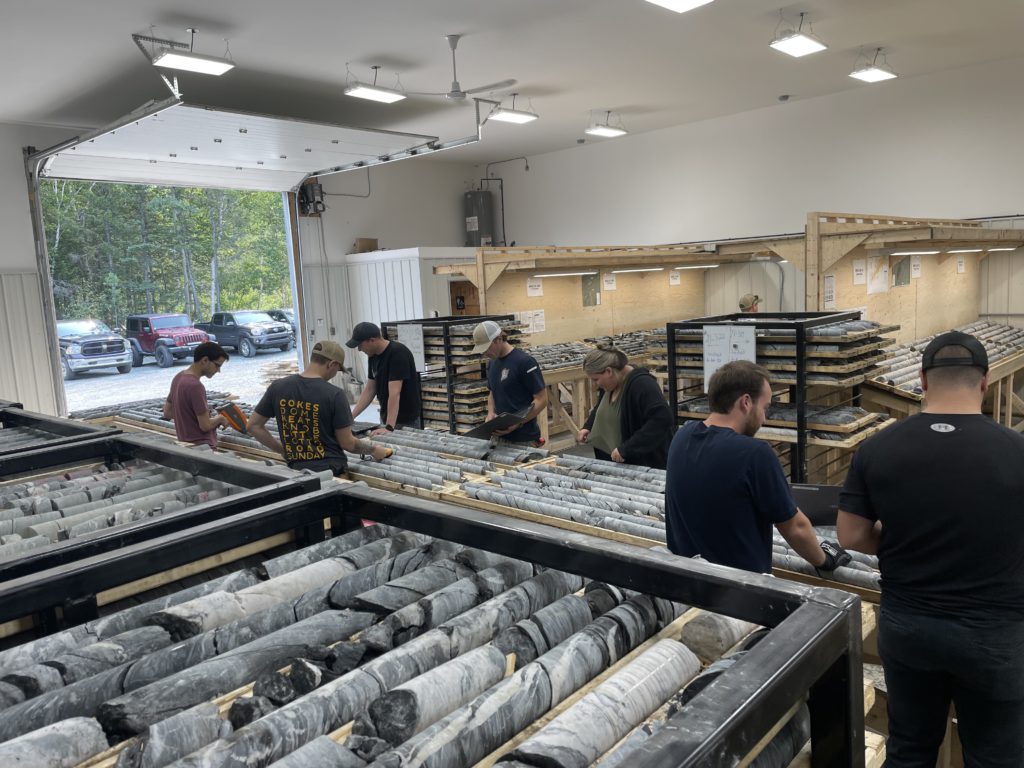The Keats North area is defined by an extensive network of gold veins in a corridor covering approximately 630 metres of strike northwards from the northern end of Keats Main to the recently discovered 515 zone. Noteworthy intervals in these veins include 45.9 g/t gold over 2.8 metres, 19.3 g/t gold over 2.0 metres, 40.6 g/t gold over 2.0 metres, 24.1 g/t gold over 2.2 metres, 13.2 g/t gold over 2.0 metres and 10.7 g/t gold over 2.7 metres.
Due to a thin cover of glacial till, there is very limited surface exposure of bedrock along the AFZ corridor including between Keats Main and Golden Joint, and until recently there had been essentially no drill testing of this gap. In early 2022, New Found Gold implemented a program of systematic grid drilling between Keats and Golden Joint leading to the 515 discovery (43.9 g/t gold over 3.9 metres) and two near-surface intervals of 8.70 g/t gold over 6.8 metres and 275 g/t gold over 2.2 metres. The latest assays have outlined an area roughly equal to the strike length of Keats, connecting two zones together that were previously separate.
“Our drilling is demonstrating that the corridor surrounding the Appleton fault zone is prolifically mineralized via a series of interconnected structures and vein sets that form a webbing shown to occur within a few-hundred-metre-wide damage zone on either side of the of the primary, crustal-scale fault,” commented Melissa Render, NFG’s VP of exploration.
“These veins are not constrained by orientation or stratigraphy, which greatly increases the amount of strike length and the variety of lithological environments to explore. In specific areas, blow outs of gold mineralization occur where veins and structures cross paths, as illustrated at Keats Main, Lotto and Golden Joint. The complexity and extent of the system provides an opportunity for discovery in a very large volume of prospective host stratigraphy,” she added.
The company has now ramped up to 14 drills to accelerate its exploration and rate of discovery at the Appleton fault zone.
More information can be found on www.NewFoundGold.ca.



